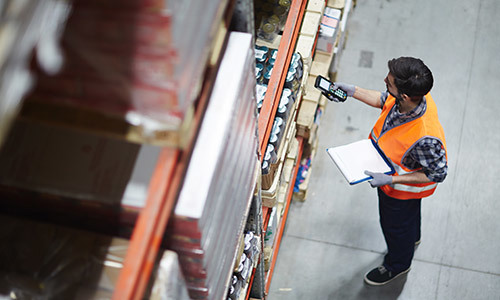Sustainability in the Warehousing Sector
Author: Scotty Lee, Content Marketing Manager, Seagull Scientific
Quick Overview:
- Sustainability policies and practices are a high priority for warehousing operations – for cost savings, compliance, and reputation with clients and shareholders.
- Sustainability encompasses both environmental and people management.
- Technology, including smart labeling, helps deliver sustainability practices.

A growing priority in a growing market
Sustainability is a high priority for businesses across the world, and especially so in the warehousing sector. Warehousing has grown significantly in recent years, fueled by the meteoric rise of online shopping and home delivery. Warehousing processes are traditionally energy-intensive, and warehousing accounts for around 11% of the total carbon emissions of the logistics sector. When you consider that the overall logistics sector includes transportation, 11% is a significant contribution. Warehousing operators are under increasing pressure to attain their sustainability credentials. Triple bottom line accounting, which places equal importance on people, planet and profit, is becoming a must-have for warehousing operators if they are to continue to compete and succeed.
The environmental impact of warehousing is substantial because of all the various aspects such as the build, operation, and waste management, with the biggest factors being heating, cooling, lighting, along with packaging, and materials handling equipment.
Harnessing the power of technology for sustainable practices
Let’s look at some of the key methods that warehousing operators can increase sustainability – using energy efficient strategies and harnessing the power of technology.
- Making the most efficient use of space with a well-planned layout – wasted or under-utilized space flies in the face of sustainability. It means that operators are heating/cooling/lighting a space that could be storing and handling more goods. By making the most of the space they already have, including harnessing the power of Artificial Intelligence (AI) to plan the most efficient way to store the most goods, warehouse operators may even be able to avoid (or at least defer) having to expand by building or buying a new, larger, warehouse space.
- Energy efficient buildings – when building new warehouses, operators should specify materials that are energy efficient and non-pollutant. A light-colored reflective roof can help reduce the heat coming inside the building and insulation can keep the heat inside during colder months. Resource saving design features such as solar panels and rainwater harvesting tanks help increase the sustainability profile of the building and can be added to an existing warehouse or can be added for new facilities. LED lamps for lighting decrease the energy profile of a warehouse, and lowers heat output, and therefore reduces the need for cooling.
- Green energy - warehouse operators look to the growing number of suppliers who provide power from renewable sources such as wind, solar, and hydro to reduce green house gas emissions.
- Materials handling equipment – forklift trucks, pallet jacks and low-level order pickers (LLOPs) use a large amount of energy as they are the main tools used to move goods within the warehouse. By switching to gas-powered equipment to electric powered equipment, warehouses can reduce their use of fossil fuels.
- Preventative maintenance – well maintained equipment is more energy efficient, so ensuring that materials handling vehicles and other equipment is well-maintained can help reduce its energy consumption. Labels and RFID tags can keep track of equipment and its usage, so that operators can plan to balance workloads and service vehicles regularly to reduce vehicle downtime.
- Packaging - when warehouses send used packaging to landfills, they have a large environmental impact, so they can aim to reduce or eliminate this practice. Baling equipment to condense packaging into blocks helps warehouses to manage their recyclables, and to free up valuable space.
- Location – the site of a warehouse can also contribute to additional energy consumption – the closer the warehouse is to existing transportation links – roads, ports, airports, rail – the more efficient is the process of getting the goods to where they need to be.
- Tools and equipment – investing in the appropriate equipment for staff safety and productivity helps address the challenge of reducing staff turnover. Although this only plays a small piece of staff turnover, this is one step towards keeping staff safe, productive, and motivated.
- Reducing paper – newer technology, particularly for picking, can help reduce paper usage within a warehousing operation. Smart technology can give pickers their lists by voice, using Augmented Reality (AR) glasses, or on a tablet or wrist-worn device, eliminating the need for paper lists.
- Cloud computing – traditional on-premises IT uses high levels of power. Cloud computing lowers energy consumption using the economies of scale method by ensuring that companies have access to the appropriate level of resources when they need them.
- Smart labeling – accurate and clear labeling of hazardous substances helps ensure materials are handled appropriately, keeping staff safe and reducing risk. It means that substances can be disposed of properly, avoiding contamination of the natural environment. Labeling provides the visibility that drives safety and productivity in a warehouse, so labeling of goods, storage shelves, racks, and bins ultimately help maintain worker satisfaction. Consumers use the information on product labels to get the best and most efficient use from the goods that they’ve bought, and to understand how to recycle or dispose of them sustainably.